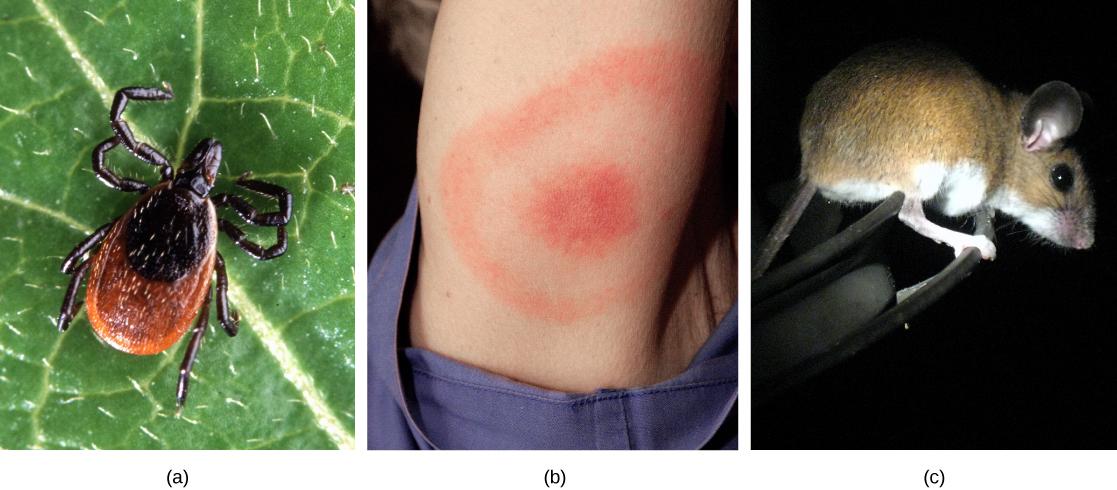Introduction
Chapter Outline
Why study ecology? Perhaps you are interested in learning about the natural world and how living things have adapted to the physical conditions of their environment. Or, perhaps you’re a future physician seeking to understand the connection between human health and ecology.
Humans are a part of the ecological landscape, and human health is one important part of human interaction with our physical and living environment. Lyme disease, for instance, serves as one modern-day example of the connection between our health and the natural world (Figure 35.1). More formally known as Lyme borreliosis, Lyme disease is a bacterial infection that can be transmitted to humans when they are bitten by the deer tick (Ixodes scapularis), which is the primary vector for this disease. However, not all deer ticks carry the bacteria that will cause Lyme disease in humans, and I. scapularis can have other hosts besides deer. In fact, it turns out that the probability of infection depends on the type of host upon which the tick develops: a higher proportion of ticks that live on white-footed mice carry the bacterium than do ticks that live on deer. Knowledge about the environments and population densities in which the host species is abundant would help a physician or an epidemiologist better understand how Lyme disease is transmitted and how its incidence could be reduced.
For example, the mild winter in the northeast during 2010–2011 caused a boom in acorns, which in turn caused an increase in the white-footed mice population. However, the following winter was cooler, leading to fewer acorns, and the subsequent decrease in the mice population means that the ticks will be more likely to seek out humans for their blood meals. You can read more about the relationship between acorns, mice, and Lyme disease at the Science Daily website and you can read more about Lyme disease from the CDC website.
Disclaimer
This section may include links to websites that contain links to articles on unrelated topics. See the preface for more information.

